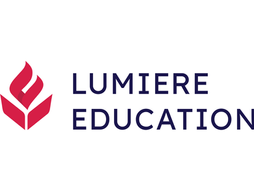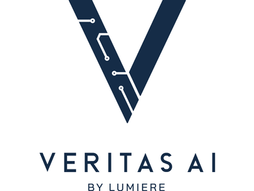10 of the Best Engineering Projects for Middle School Students
Hands-on learning, especially through projects, can be a highly educational and enjoyable experience for middle school students. Young learners can use these projects to be inspired, ideate, experiment, iterate, and implement their proposals. Not to mention, hands-on project work is a great way to test and develop your problem-solving skills and creativity!
If you are a middle school student, undertaking an independent or group engineering project can help you explore your curiosity, gain teamwork experience, and learn more about how different day-to-day machines and structures operate. To help get you started, we have compiled a list of 10 engineering projects that you can use to get inspired and build upon:
1. Build-a-bridge project
What to do: You can explore the principles behind the different kinds of bridges by building a model bridge using materials like popsicle sticks, straws, spaghetti sticks, and other safe, household items.
Here, you witness how different shapes and materials affect design and stability. Learn about the fundamental principles of bridge design (span, load, etc) and challenge yourself by setting minimum load targets, and freestanding sections, and even allot yourself a budget to simulate how civil engineers work with finite resources.
Skill sets: Basic knowledge of materials science and structural engineering. Before beginning the project, you should research the different kinds of bridges (arch, suspension, etc.). Problem-solving skills are also helpful.
Ideal for: Students looking to build a range of skills and who are interested in structural engineering and architecture.
Drawbacks: Requires space and a controlled environment so external factors (wind, people, etc) do not accidentally damage the model. Precision is paramount and you will also need a steady hand while building the bridge.
Tips: Begin with simple bridge designs to understand the basics before moving on to more complicated models. Use resources like Teachengineering.org and Carnegie Mellon, which have bridge-building lesson plans.
2. Build and test paper planes
What to do: Build paper planes with different designs and materials to see how their flight is affected. Learn how different forces like drag, lift, and thrust affect a plane’s ability to fly. When designing and testing, pay special attention to the kind of paper, wing size, and fuselage length. Maintain a ledger to record data like flight distance, air time, and a stability rating for each iteration. Once you have perfected your design, challenge your friends and classmates to a paper plane competition!
Skill sets: You need good precision and attention to detail when folding paper. Strong organization skills will help you record test flights and use this data to improve future models. During the experiment, you will develop problem-solving and analytical skills when investigating what makes one plane better than another.
Drawbacks: The experiment is not eco-friendly. We recommend using used sheets from offices, schools, etc. to reduce wastage.
Ideal for: All middle school students. The project is fun and is an enjoyable way to learn about basic physics concepts.
Tips: You can use YouTube tutorials and other online resources to fold better paper planes.
3. Construct a pizza box solar oven
What to do: Harness the power of the sun using this low-cost, eco-friendly solar oven and cook outside! All you need is some aluminum foil, black paper, plastic wrap, and basic art supplies like tape and a scissor. Once you design and build your solar oven, use it to compare how long it takes to melt items (for example, cheese or chocolate) compared to a regular oven. Take into consideration outside weather conditions and how they affect the box’s ability to produce heat.
Skill sets: None required
Drawbacks: The efficacy of the oven can depend on outside weather conditions. Ideally, you need a lot of sunshine to obtain the best results
Ideal for: Middle school students who have limited experience with undertaking hands-on projects
Tips: Build more solar ovens using different boxes and materials to see how they affect the internal temperature
4. Egg drop challenge
What to do: Design and build a landing craft that keeps an egg safe when dropped from a height! Learn about gravity and how it pulls objects with mass, and discover which padding materials can keep your egg safe. Make multiple iterations of your landing craft with different materials to see which works best. You can use internal and external padding and even combine materials. Test by dropping the egg from different heights — you can do this experiment with friends and see who designs the best craft!
Skill sets: You need to use your creativity to think of designs and materials that can keep your egg safe!
Drawbacks: This experiment can get messy and wasteful. We recommend using a hard-boiled egg or an egg in a sealed plastic bag.
Ideal for: All middle school students. Students can use this project to learn more about aerospace engineering and the different forces acting on crafts re-entering the Earth’s atmosphere. You can make the challenge tougher by setting minimum drop times, limiting the number of iterations, and using only certain materials to further test problem-solving and critical-thinking skills.
Tips: Use online resources to structure the experiment and include readings on aerospace engineering.
5. Build an automatic pill dispenser
What to do: You can design and build a pill dispenser that gives you the assigned medication at the correct time! To undertake this project, you should have experience using software like Arduino. You will need a programmable motor that moves at certain times to dispense pills, an LCD to show the date, time, and a message, and LED lights and a buzzer to set a reminder alarm.
Skill sets: Prior knowledge of a prototyping platform like Arduino, familiarity with designing and building circuits
Drawbacks: This project is more advanced and requires both prior knowledge and materials like a motor, clock, LED lights, and LCD, which can be expensive
Ideal for: Middle school students who want to do more advanced projects
Tips: Examine commercially available pill dispensers available in stores for inspiration — it can help you decide what innovation your project needs!
6. Magnetic levitating train
What to do: In this project, you will build a train without wheels! Begin by sourcing your materials: a magnet, a non-magnetic surface, and construction materials to build a track. This project will teach you about magnetic levitation and how magnetic fields generate a force. When constructing your train, experiment with different weights to see the maximum weight you can use to maintain levitation.
Skill sets: Attention to detail and precision are important when building the enclosed train track to ensure levitation. Once built, adjust your model to ensure the train floats perfectly above the track, improving your problem-solving skills.
Drawbacks: You need to source specific materials for this project (monopolar magnetic tape, wooden blocks, etc) which can be expensive. Magnetic experiments can be tricky to get right the first time; achieving stable levitation requires patience.
Ideal for: All middle school students who want to learn about the principles of magnetism and are interested in engineering.
Tips: You can refer to online tutorials and purchase project kits, making sourcing materials easier.
7. Design a working flashlight
What to do: Explore how electricity and circuits work by building a flashlight, which is but a simple series circuit! You will learn how to assemble a series circuit and understand how an electric charge flows through a circuit. Materials required include at least two batteries, copper wire, a bulb holder, a paper/cardboard tube, and tape, scissors, and other art supplies.
Skill sets: This project is quite basic. Prior knowledge of kinds of circuits and concepts like voltage, charge, current, parts of a circuit, etc. is helpful, though not necessary.
Drawbacks: This project could be too basic for students with prior knowledge and experience in designing circuits.
Ideal for: Middle school students who benefit from hands-on learning to introduce concepts
Tips: You can make this activity more challenging for experienced students by making them design a circuit from memory
8. Build a wind turbine
What to do: The wind turbine experiment is a great way to learn about clean energy sources. Here, you will build your own turbine to understand how wind spins the blades of the fan, moving the internal turbine to generate electricity. See how efficient your turbine is by attaching a small weight that is hauled up when the wind blows on the blades to measure the work done. Learn how different materials and blade shapes, sizes, and angles impact efficiency.
Skill sets: You will develop critical thinking and problem-solving skills when deciding on materials and blades needed to build an efficient turbine.
Drawbacks: A well-functioning turbine can be weather-dependent. Materials available can limit the kind of turbine you build.
Ideal for: Middle school students interested in engineering and generating clean energy.
Tips: Use a turbine kit with the necessary materials to build a turbine. Online tutorials and resources can help you refine your model.
9. Water bottle rockets
What to do: Use a two-liter water bottle to build a pressurized rocket that can fly up to a hundred meters (or more!) in the air. You will also need cardboard to use as fins, clay for the nose cone, a pump to compress the air in the bottle, safety equipment like goggles, tape, glue, string, and other art supplies. This experiment is a great way to see Newton’s laws of motion in action and you can witness how design and construction impact flight time, height, and speed.
Skill sets: You will need a basic understanding of physics and concepts like force, displacement, and gravity. Familiarity with Newton’s three laws is an advantage. This project is hands-on with great scope to test your problem-solving skills. We recommend you do it with a team.
Drawbacks: This is not a beginner-friendly project — you need a lot of supplies which can cost some money, and ideally should be supervised by an adult or teacher.
Ideal for: Students interested in physics and who enjoy hands-on experiments!
Tips: Use online resources to build better rockets. NASA offers a guide to making a good water bottle rocket with information on theory, material, and methodology available.
10. Build a robotic arm
What to do: Use cardboard, strings, straws, and other household items to design and build a robotic arm capable of performing basic movements. You will need a small motor and, optionally, basic programming skills to direct your arm to do tasks. Through this project, you will learn about the engineering design process and understand hydraulics, ranges of motion, and other key robotics principles.
Skill sets: Programming experience. Ideally, this project should be done in groups as it requires a fair amount of problem-solving and critical thinking.
Drawbacks: This project is complex and could be beyond the capabilities of students with no prior experience. Materials costs could also be expensive.
Ideal for: Middle school students interested in engineering and robotics
Tips: If this is your first time, begin with a simple model that does basic movements. Perfect them before attempting more complex actions.
One more option - The Lumiere Junior Explorer Program
The Lumiere Junior Explorer Program is a program for middle school students to work one-on-one with a mentor to explore their academic interests and build a project they are passionate about. Our mentors are scholars from top research universities such as Harvard, MIT, Stanford, Yale, Duke and LSE.
The program was founded by a Harvard & Oxford PhD who met as undergraduates at Harvard. The program is rigorous and fully virtual. We offer need based financial aid for students who qualify. You can find the application in the brochure!
To learn more, you can reach out to our Head of Growth, Khushi Malde, at khushi.malde@lumiere.education or go to our website.
Multiple rolling deadlines for JEP cohorts across the year, you can apply using this application link! If you'd like to take a look at the cohorts + deadlines, you can refer to this page!
Kieran Lobo is a freelance writer from India, who currently teaches English in Spain.




